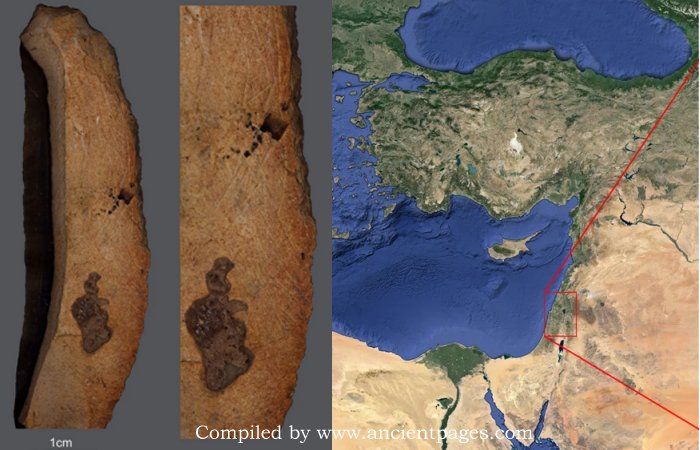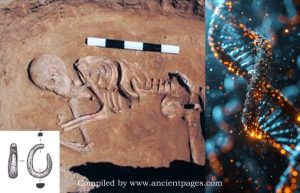Conny Waters – AncientPages.com – A recent study has provided new insights into the behavioral complexity of Palaeolithic hominins by examining incised stone artifacts from the Levantine Middle Palaeolithic period.
The research focuses on artifacts from Manot, Qafzeh, and Quneitra caves, revealing that these items were deliberately engraved with geometric patterns. This suggests advanced cognitive and symbolic behavior among early humans. In contrast, artifacts from Amud Cave exhibit shallow and unpatterned incisions indicative of functional use.
Location of the archaeological sites. Credit: M. Goder-Goldberger et al.
Historically, the intentionality behind Middle Palaeolithic incised stone artifacts were accepted without robust empirical support. Many archaeologists considered these marks to be functional or resulting from natural wear rather than evidence of abstract or symbolic thought in early hominins. Symbolic behavior was believed to have emerged later in human evolution with modern humans.
This study challenges previous assumptions by providing evidence of deliberate engravings that predate global colonization by modern humans. Researchers used advanced 3D surface analysis to examine artifacts from key sites such as Manot Cave, Amud Cave, Qafzeh Cave, and the open-air site of Quneitra. They distinguished intentional engravings from functional marks based on geometry and patterning.
The engraved cortical Levallois core of Manot. High-resolution photograph and 3D model (photo by E. Ostrovsky and drawing by M. Smelansky, 3-D models by E. Paixão and L. Schunk.
The findings highlight significant differences: Artefacts from Manot, Qafzeh, and Quneitra feature deliberate geometric engravings aligned with surface topography for aesthetic and symbolic purposes. Conversely, those from Amud Cave show shallow incisions consistent with practical use as abraders. This research underscores the development of abstract thinking and cultural complexity in Middle Palaeolithic societies.
“Abstract thinking is a cornerstone of human cognitive evolution. The deliberate engravings found on these artifacts highlight the capacity for symbolic expression and suggest a society with advanced conceptual abilities,” said Dr. Mae Goder-Goldberger, from Hebrew University and Ben Gurion University, who was the study’s lead author.
Photo of Amud 1, the retouched blade, note the Incisions on the cortex. Credit: M. Goder-Goldberger et al.
“The methodology we employed not only highlights the intentional nature of these engravings but also provides for the first time a comparative framework for studying similar artifacts, enriching our understanding of Middle Palaeolithic societies,” Dr. João Marreiros from the Monrepos Archaeological Research Centre and Museum for Human Behavioural Evolution, LEIZA, and ICArEHB, University of Algarve added.
See also: More Archaeology News
The engraved artifacts discovered at Qafzeh, Quneitra, and Manot represent isolated instances within their specific chronological and geographic settings. However, the incisions’ common characteristics and pattern structuring similarities indicate deliberate, intentional actions. These findings enhance our comprehension of symbolic behavior and provide essential insights into early hominins’ cognitive and cultural evolution.
This research is a significant advancement in understanding our ancestors’ symbolic behavior, helping to bridge the gap between practical tool use and abstract expression.
The study was published in the journal Archaeological and Anthropological Sciences
Written by Conny Waters – AncientPages.com Staff Writer











